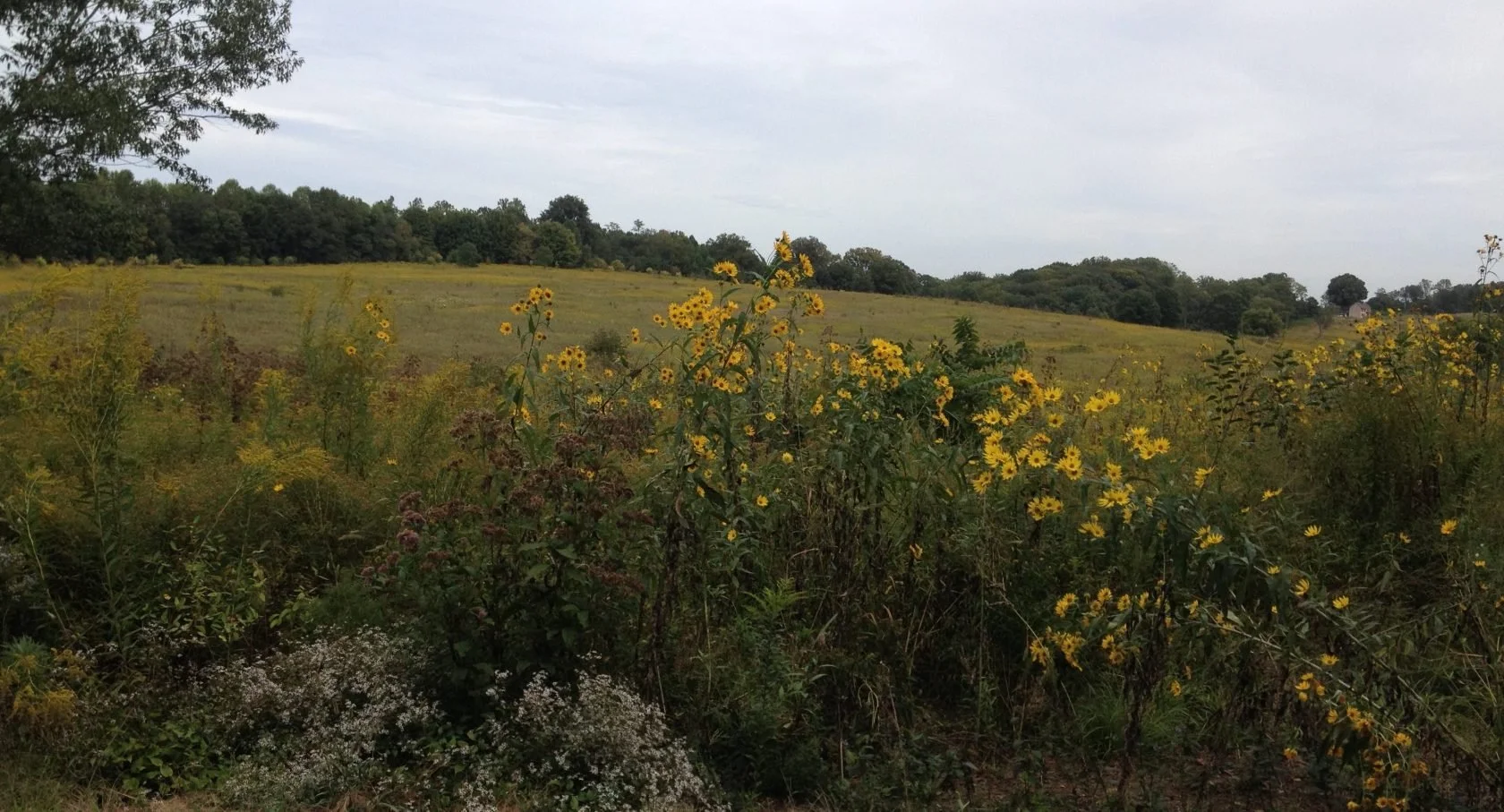Making Our Meadow - Part Two
Read Part One
The Site
Well to start things off, we were dealing with a suboptimal meadow site in our yard.
Our plan was to transition about 1500 square feet of our back yard towards the back of our property. No, it wasn’t quite the dozens of rolling acres like the ones at Longwood Gardens (above) that inspired us. But it would make a difference in a small way, and provide us with a nice patch of wild beauty.
But the thing about open meadows is they get a lot of sun, and thus are home to sun-loving species. Our yard definitely has some solid sunny spots - just not where we’d consider putting the meadow. The yard is long and narrow. There’s a bright sunny patch in the middle, but that’s the bit of lawn we wanted to keep as a play area and to eventually add a small patio right behind our house. The back of the yard gets some decent sun, but there are also some small areas of heavy shade under some mature pin oaks at the very back. The very front of our meadow qualifies as full sun, but it gets shadier the farther back you go. So we had to think carefully about what plants would be in our meadow. But we also had to hope that the plants we selected would thrive in conditions that were fine, but again, suboptimal.
Going from Lawn to Meadow
But how to go from traditional turf grass to wild meadow? Once you start doing the research, you quickly learn that there are a lot of competing methods out there, and it’s pretty hard to sort through. It’s kind of like any complicated home improvement project you’re trying to do yourself. You read through all of the conflicting instruction materials you can. At first the pressure to make the right choice boggles the mind. Then as your expertise builds, you nod to yourself sagely, as you determine that the cheapest, easiest method might just be the one for you.
It’s the same with meadows - you have to figure out which methods you trust the most, but you also have to take into account the amount of money you’re willing to spend, your comfort using herbicides, the amount of time you have, and what time of year you’re starting. So the way we went about it in our yard might very well be different from how you’d go about it in yours (or how we’d have gone about it if we were independently wealthy or even if we’d just started six months earlier). So don’t read this expecting definitive step-by-step instructions - this is just the story of how we did it.
The biggest lesson is, you can’t just throw down seeds and have a fully formed meadow later that season. Meadows take time to establish, and that time is measured in years. Native meadow plants take time to develop their root systems, and most won’t flower the first year.
Like I said, you can really go down some rabbit holes, but there are two main choices we had when starting our meadow project: growing from seed or using landscape plugs like they use in ecological restoration projects (and at Longwood). This was a pretty easy choice. Randomly distributed plugs are great because they mature much faster, but to buy enough for a meadow, even a small one like ours, can be pricey. Not to mention that it;s not always easy for individual homeowners to buy them from producers who tend to sell only to the trade. And since we had a new baby at home and were trying to do this as cheaply as we could the choice was easy: grow from seed.
Next up, I'll get into the seed we chose and how we went about starting our meadow this spring.
Read Part Three

